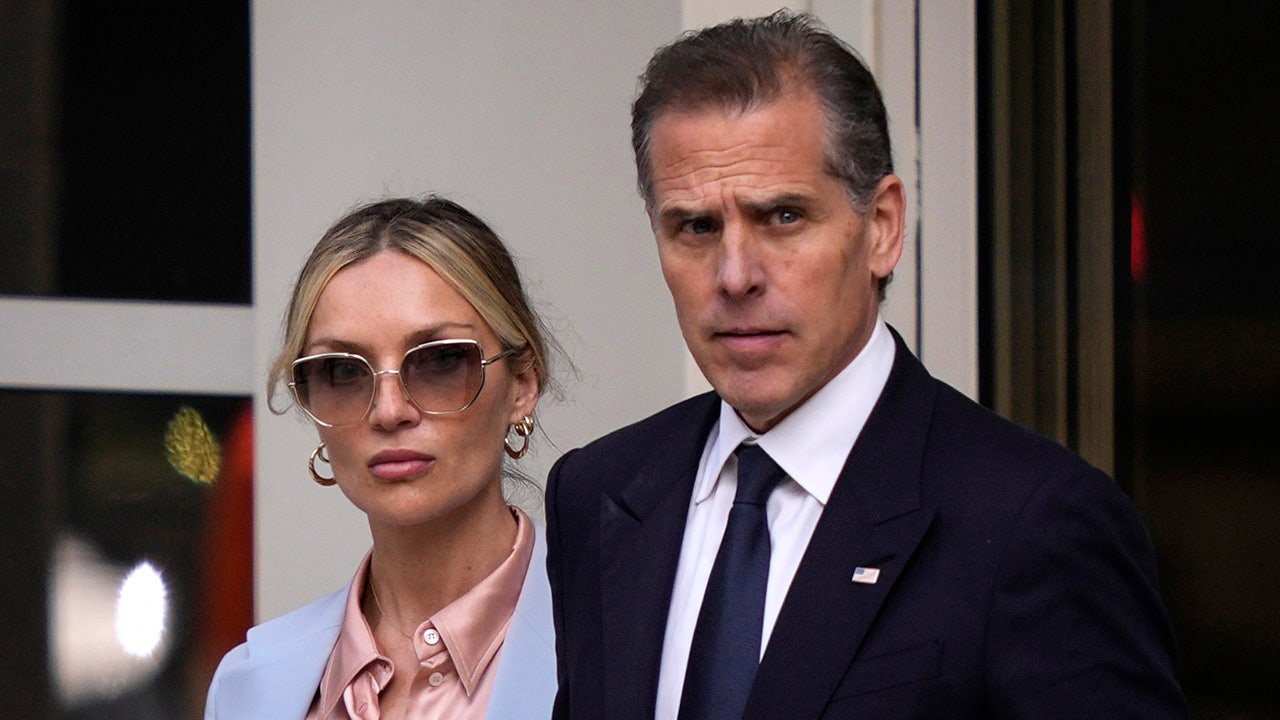Seemingly unrelated news items collided midweek to suggest a possible solution for a vexing problem: President Biden’s age.
North Dakota
Major Navigator CO2 pipeline project is on hold while the company reevaluates the route in 5 states
:quality(85)/cloudfront-us-east-1.images.arcpublishing.com/gray/KPIBUR5MT4JXADG3UZTSAH7W54.jpg)
OMAHA, Neb. (AP) — Navigator CO2 Ventures announced Tuesday that it is putting on hold one of the two biggest proposed carbon dioxide pipeline projects in the Midwest so it can reassess the project.
The company withdrew its application for a key permit in Illinois and said it was putting all its permit applications on hold. The decision comes after South Dakota regulators last month denied a permit.
The proposed 1,300-mile project would carry planet-warming carbon dioxide emissions from more than 20 industrial plants across South Dakota, Nebraska, Iowa, Minnesota and Illinois. The Illinois permit is crucial because that’s where the company planned to store the carbon dioxide underground.
“As is consistent with our recent filings in neighboring jurisdictions, Navigator will be taking time to reassess the route and application,” the company said in a statement.
Navigator said it is not abandoning the project. It plans to reapply for permits where appropriate after completing its evaluation.
Opponents cheered the news that the project is being put on hold, and promised to keep fighting when the company reapplies. Opponents had organized landowners who were concerned about the project.
“When you organize the families most at-risk of eminent domain, you can stop a pipeline,” said Jane Kleeb with the Nebraska-based Bold Alliance that also fought against the ill-fated Keystone XL oil pipeline. “This is a core lesson we have learned over the years, as pipeline corporations try to bully hard-working Americans into giving up their land for corporate greed.”
Proposed pipelines in the region would use carbon capture technology that supporters believe would combat climate change. Opponents question its effectiveness at scale and the need for potentially huge investments over cheaper renewable energy sources. New federal tax incentives and billions of dollars from Congress toward carbon capture efforts have made such projects lucrative.
Summit Carbon Solutions is behind the biggest proposed carbon dioxide pipeline in the area. It is pressing forward with its plans despite regulatory setbacks in the Dakotas. North Dakota agreed to reconsider its denial of a permit for the $5.5 billion, 2,000-mile (3,220-kilometer) pipeline that would cross five states, and Summit is reapplying in South Dakota. A separate hearing on that project in Iowa started in August. And Minnesota regulators plan to conduct a detailed environmental review of the project.
The Summit pipeline would carry carbon dioxide emissions from more than 30 ethanol plants in Iowa, Minnesota, Nebraska, North Dakota and South Dakota. The emissions would be buried in North Dakota.
Copyright 2023 The Associated Press. All rights reserved.

North Dakota
Opinion | Democrats are wrestling with an age-old problem

The problem isn’t his numerical age. People age in different ways. In some cases, people hardly age at all, they’re so physically fit and mentally astute. But even the most robust 80-year-old would be challenged to keep pace with the White House job. Far younger presidents have turned gray in the Oval Office.
Biden’s steady decline the past few years — his stumbles, his search for words, his occasional blank stare — has been impossible to ignore. Such change isn’t a reflection of character; it’s part of the natural order of life, and it isn’t ageist to take note. But Biden and former president Donald Trump, 78, have forced the issue to the forefront of our politics.
Thus, we see North Dakota’s recently approved ballot measure to establish an upper age limit for congressional candidates — the nation’s first serious attempt to grapple with America’s perceived gerontocracy. Until someone challenges the measure as unconstitutional, as expected, you can’t run for Congress in North Dakota if you would turn 81 during your term. Neither Biden nor Trump could run for Congress in North Dakota.
For now. Under a 1995 Supreme Court ruling, states cannot create eligibility restrictions beyond what’s in the Constitution. Of course, a solid argument can be made that elections take care of the age question. If candidates are deemed too old, voters don’t elect them.
Inarguably, a significant obstacle to a Biden win is Kamala Harris, whose low popularity has not been improved by her lackluster performance as vice president. More independents and disenchanted Republicans might swing for Biden if it weren’t for the prospect of a President Harris — not because of her sex, race or any other demographic category, but because of her competency, or lack thereof.
The question now is, how risky would it be for Democrats to replace her? Some worry that a change would jeopardize Black votes. It was never clear, however, that Harris was a draw for Black American voters, even if some Black women celebrated her rise. When she dropped out of the presidential race in 2019, she was polling below Pete Buttigieg in South Carolina.
Moreover, does anyone really think any Democrats are going to suddenly turn to Trump because Biden changes running mates to improve his chances of reelection? Herein lies one of the problems with identity politics. Bloc voting by skin color is among our most racist assumptions. Democrats, regardless of pigmentation or cultural heritage, want to win elections, presumably to advance a worldview consistent with their values.
I’m not alone in suggesting that Biden replace Harris, perhaps in exchange for a key role in his administration. Serving as attorney general at least would be in her wheelhouse. Several alternative candidates have been suggested, including Michigan Gov. Gretchen Whitmer, Illinois Sen. Tammy Duckworth and, needless to say, Taylor Swift. (Kidding, though her outspoken contempt for Trump isn’t nothing.)
By now, you’ve probably forgotten about the second part of the news collision earlier mentioned. It was a brief story Wednesday alleging a controversial development in a New York congressional race: Hillary Clinton had endorsed Westchester County Executive George Latimer for the House seat currently held by incumbent “squad” member Jamaal Bowman.
In a post on X, Clinton wrote: “With Trump on the ballot, we need strong, principled Democrats in Congress more than ever. In Congress, @LatimerforNY will protect abortion rights, stand up to the NRA, and fight for President Biden’s agenda — just like he’s always done.”
The controversy seems to stem mostly from the vitriol between the two candidates. Bowman has alleged that Latimer is an anti-Muslim racist controlled by Republican billionaires who want to end voting rights. (Now that’s a mouthful.) During a recent debate, Latimer claimed that Bowman looks out only for people of color and ignores other constituents.
These volleys have come amid divisions over Israel’s continued military operations in Gaza. Latimer is supported by the pro-Israel AIPAC, while his supporters accuse Bowman of using antisemitic tropes. As for Clinton, the question is, why now? Why would she suddenly get involved in a congressional race?
We are left to speculate about motive, but the effect of Clinton inserting herself into the news cycle is to remind voters that, but for her defeat in 2016, we wouldn’t be stuck in this old-White-men dilemma. She is also reminding people of her relative centrism, her support for Israel and her broadly respected role as secretary of state.
No one has mentioned her as a possible running mate for Biden far as I know, but why not replace Harris with Clinton? At 76, she might want no part of it, but it’s hard to retire when you feel your job isn’t done. If Biden needs to step down, even those who didn’t vote for Clinton would have confidence in her ability to keep the country on track. It’s just a thought, but worse ideas have met with regrettable success.
North Dakota
North Dakota Outdoors: Chronic wasting disease fatal if left unchecked

Submitted Photo
Chronic wasting disease is a fatal disease of deer, moose and elk that can cause long-term population declines if left unchecked. Photo from NDGF.
Even if you don’t hunt, I hope you’ve at least heard about chronic wasting disease. If you haven’t, let’s start today.
Chronic wasting disease is a fatal disease of deer, moose and elk that can cause long-term population declines if left unchecked. There is no treatment or cure, and once established in an area, it remains indefinitely. For these reasons, CWD poses a major threat to North Dakota deer, elk and moose and the future of hunting these animals.
Combating CWD is a long-term endeavor that requires committed, diligent effort from all North Dakotans who value these big game animals. Through our cooperative dedication to the cause, we can protect these important species and North Dakota’s hunting heritage.
A deer with CWD will only begin to look sick in the late stages of the disease, several months after it has been infected. Most positive deer found in North Dakota appeared healthy when they were harvested. The only way to determine if your animal is infected with CWD is by getting it tested. Testing information is also critical for determining the distribution of CWD and evaluating the success of the Department’s management strategy.
With the 2023 chronic wasting disease surveillance season completed, the North Dakota Game and Fish Department reported 11 deer tested positive.
“The good news is that all these cases came from units where CWD has already been detected. None came from the southeastern part of the state where we were focusing our surveillance efforts,” said Dr. Charlie Bahnson, department wildlife veterinarian. “However, CWD was detected right across our border in eastern Manitoba near Winkler, and again near Climax, Minn., where it was first found in 2021.”
Positive cases detected in 2023 came from units 3A1, 3A2, 3E1, 3E2 and 3F2.
Casey Anderson, department wildlife division chief, said that despite lower harvest success, the department met its surveillance goal in units 2B, 2G and 2G1. The objective is to achieve a sampling goal of 10% of the allocated deer gun licenses for a given year.
Game and Fish will use its 2023 surveillance data to guide CWD management moving forward.
North Dakota
North Dakota Job Service offers resume and interview workshops

BISMARCK, N.D. (KFYR) – With high school and college graduation in the rearview mirror for the classes of 2024, it’s time to get ready for college or prepare for the job market.
Finding a job after graduation can be difficult, but learning how to sell yourself can help you stand out. One North Dakota company that provides this training is the Workforce Center through North Dakota Job Service.
“Every Wednesday, we have different workshops throughout the morning that you can attend, one of them specifically on interviews, one of them specifically on doing resumes. We also have a transferable skills one, so individuals that may be looking to change into a different occupation, we would be able to help look at what your skill sets are and how they apply to other occupations,” said Amy Arenz, the Bismarck Workforce Center manager for North Dakota Job Service.
Industries projected to be seeking many new employees in the coming years are construction, healthcare, transportation and information technology.
Copyright 2024 KFYR. All rights reserved.
-

 Movie Reviews1 week ago
Movie Reviews1 week agoFilm Review: I Used To Be Funny offsets its humorously-adjacent title with a dark, heartbreaking temperament. – The AU Review
-

 World1 week ago
World1 week agoEconomy, migration: Voters' main concerns ahead of elections
-

 News1 week ago
News1 week agoWoman handcuffed in police car hit by freight train reaches $8.5M settlement
-

 Politics1 week ago
Politics1 week agoTrump campaign accelerates vetting of potential running mates
-

 Politics1 week ago
Politics1 week agoHunter Biden trial enters 3rd day with cross-examination of FBI agent
-

 Politics1 week ago
Politics1 week ago'It's absurd': Congress takes bipartisan action after Cuban officials' tour secure parts of major airport
-

 Politics1 week ago
Politics1 week agoNew York appeals court judges in Trump case routinely donated to Democrats, records show
-

 World1 week ago
World1 week agoFamine ‘likely’ already stalking northern Gaza: Report




















